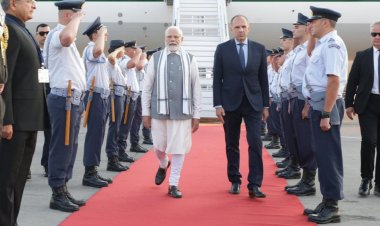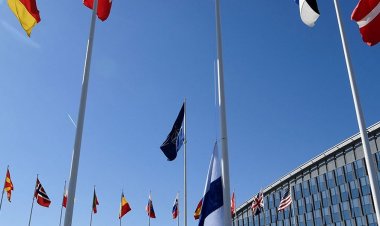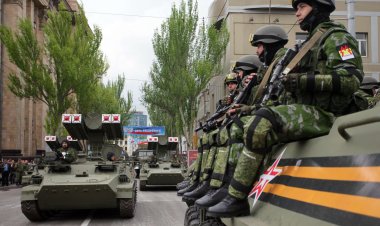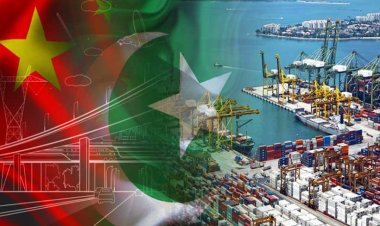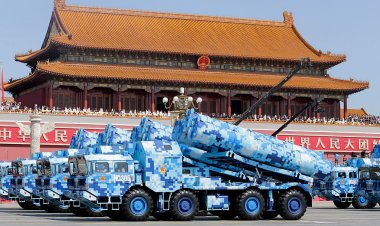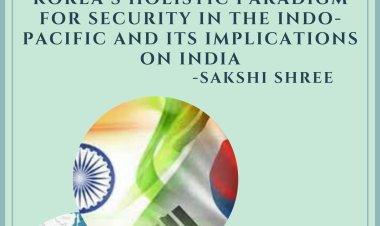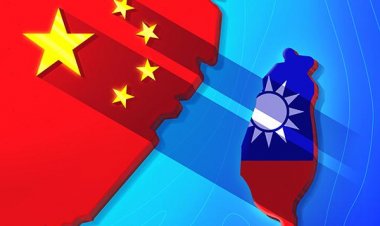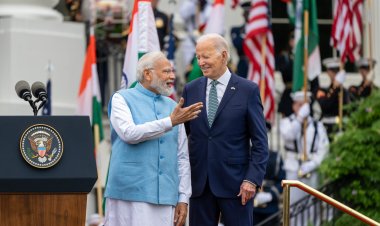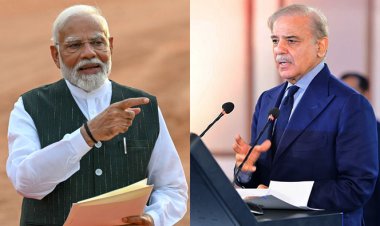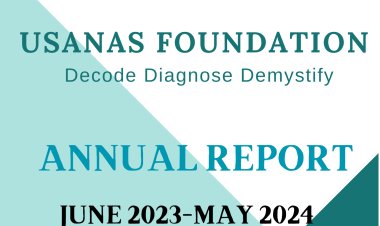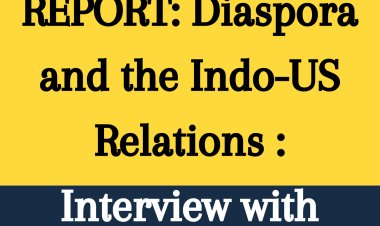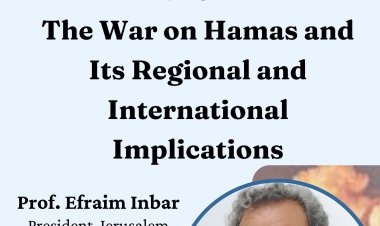Is the Dragon Leading Us Into a New World Order?
China’s Belt and Road initiative has a strong potential to serve as a great source of regional integration, political stability and economic empowerment.

Commentary
By Abhinav Pandya
Back in the year 2008, an illiterate seer in the remote Indian village of Rajasthan informed this author that “Saina” (a corrupted pronunciation of China in a local dialect) will reach the borders of India through Nepal via vast communication networks, including roads and railways. Though not much inclined to dwell on mysticism, the author felt compelled to analyze China’s Belt and Road initiative — also known as One Road, One Belt (OBOR), which involves reviving the ancient Silk Road linking Asia to Europe and has become the most visible symbol of China’s rising ambitions — and its implications for the global geopolitical scenario. Ever since Donald Trump pulled the plug on the Trans-Pacific Partnership (TPP), in effect surrendering its levers to regulate international commerce, China has seized the opportunity to prove that it can assume the mantle of global economic leadership.
The Belt and Road initiative is a massive endeavor with the potential to fundamentally transform the world’s communications and trade, as well as the political and economic landscapes. Once complete, the “belt” will include a massive network of highways and railways linking China to Central Asia, Europe and the Middle East. The “road” will consist of a series of maritime routes between Southeast Asia and Europe. According to the Korean scholar, Jae Ho-chung, when completed, “OBOR will include 60 countries, with two-thirds of the world’s population, 55 percent of global GDP, and 75 percent of global energy reserves. It will consist of 900 infrastructure projects, valued at about $1.3 trillion.” Much of the funding is expected to come from Chinese banks, financial institutions and special funds. So far, 68 nations and international organizations have already signed cooperation agreements with China. And 18 countries, including the United Kingdom, have agreed on principles for financing Belt and Road projects.
However, the most interesting aspect of the OBOR summit held recently was that despite continuous Chinese attempts to cajole India to join the event, India formally boycotted the summit. The two-day mega event was attended by 29 heads of state, 1,200 delegates from over 100 governments and global leaders, such as UN Secretary General António Guterres and World Bank President Jim Yong Kim, to discuss what China’s President Xi Jinping called the “project of the century.”
Thucydides’ Trap
India is not alone in raising questions about Chinese dominance and authoritarianism. Following the recent summit about the OBOR project in China, new plans are emerging showing a clear discomfort from several countries and popular opposition from the local communities from the participant countries. Several new economic initiatives have come up in competition to Chinese OBOR initiative, for example, Vladimir Putin’s Lisbon-Vladivostok initiative — the Old Silk Road and the New Chinese, Russian and Indian Alternatives in Geopolitical Games (STRATFOR) — to enhance the role of Eurasian Economic Union (EEU) and the Indo-Japanese maritime connectivity project, bypassing Central Asia. However, all these new initiatives lack the needed financial resources, political will and the logic of utility, necessity and the long-term sustainability. It seems that in the present scenario there is a huge gap between perception and reality. The world of geopolitics has always been marked by fears among the established powers of the hidden intentions of the rising power, which Graham. T. Alison has referred to as Thucydides’ Trap in 2017 classic on international relations, Destined for War. In today’s globalized world, economics is an important domain where political tensions have their repercussions that have made this Chinese mega-project an object of suspicion among the existing world powers and China’s neighbours. However, to understand this gap between perception and reality, one needs to analyze the true motivations of China behind OBOR initiative.
On closer analysis, it seems that Belt and Road is not merely a big march of dragon boots hidden behind the Eurasian matrix of infrastructure, communications and energy projects. The motivations to a large extent are driven by strong economic needs. As Giorgio Fiacconi mentions in The Times of Central Asia:
China is certainly going ahead with OBOR, not to benefit the various countries that the project should transit, but simply because it is the western European economies that the huge Chinese production potentiality needs to target with its export. This is certainly in the interest of the European Union that sees the Chinese market an attractive consumer for EU’s quality goods.
The fact that in China, as well as in many Asian economies, the increasing production exceeds the demand of the local market and to keep the development trend, this production must be exported and at the end, there are only two large markets that have the potential to absorb, both in terms of population and purchasing power, and these are the EU and US, while Europe welcomes any initiative that can reduce cost and speed up transportation.
Further, Donald Trump’s new anti-globalist and apparently nationalist policy may be another incentive for China to speed up the project in the name of safeguarding the world order based on free trade and fighting any form of protectionism, which is evident from Xi Jinping’s strong defense of economic globalization and international cooperation on issues that threaten global prosperity and growth at Davos.
To reassure the regional partners, President Xi declared in his 2013 speech at the Kazakhstan University that China will respect the development paths chosen by the respective nations and would never interfere with their local politics. Furthermore, Xi stressed that “China will never seek a dominant role in regional affairs, nor try to nurture a sphere of influence.”
All That Glitters
However, all that glitters is not always gold, and oriental mysticism has outlived the storms of modern ideologies and passions of rationalism. Hence, a nuanced peek into the inner workings of the Chinese mega-project will unravel much more than what meets the eye through press releases and diplomatic niceties. James Dorsey informs in The Times of Central Asia that a leaked long-term plan for “China’s massive $56 billion investment in Pakistan projects the goals of the Beijing’s One Belt, One Road initiative as a ploy for economic domination, the creation of surveillance states, and allowing China to shape media landscapes.”
The leaked plan also revealed that advanced monitoring and surveillance systems would be built in Pakistani cities to ensure law and order. The system would involve the deployment of explosive detectors and scanners to cover major roads, case-prone areas and crowded places. The plan also outlined how Pakistan would be turned into an even greater surveillance state that it already is, where freedom of expression and the press are manipulated. It also suggested the degree to which One Belt, One Road is designed to establish China as Eurasia’s dominant power based on economics as well as the adoption of measures that undermine democracy or inhibit political transition in autocracies.
From several quarters, accusations of the lack of transparency have emerged. The China-Pakistan Economic Corridor (CPEC) faces staunch opposition in Baluchistan from the separatist movement, and Pakistan’s army is brutally suppressing the Baluch resistance to ensure the success of the project. Similarly, Singapore’s The Straits Times noted that China had recently used its economic clout to unsuccessfully pressure South Korea to back away from deployment of an advanced US anti-missile system by reducing Chinese tourism and blocking Korean music videos on streaming services.
Further, the immense support which the project receives in the Chinese policymaking circles also raises the suspicions about China’s real motives. China’s Politburo is vigorously pursuing the project and making intense efforts at the global level to seek legitimacy for it. Writing in Foreign Affairs, Zaid Haidar notes that “Championed by Xi, it is reportedly being coordinated by a task force chaired by one of the seven members of China’s Politburo Standing Committee — the top decision-making body in China. As part of a public relations offensive meant to promote the initiative, state-backed think tanks have hosted dozens of conferences around the world on Belt and Road and on promoting opportunities for cooperation, sometimes in coordination with leading U.S.-based think tanks. Such conferences have succeeded in generating buzz and garnering legitimacy for Belt and Road among policy circles.”
The use of state-owned companies, banks and enterprises by China to promote the OBOR initiative itself shows the hidden political objectives as the use of state-owned companies and may not guarantee efficiency, but it certainly gives China a tighter control over the internal political dynamics of the partner countries.
Upsetting the Current World Order
From the above analysis, it seems that One Belt, One Road initiative is a multilateral economic regime based on the ideal of shared prosperity and a grand vision for achieving a breakthrough in global commerce through revolutionary advances in communications and energy infrastructure. However, the hidden motives behind global geopolitical dominance and OBOR being a “silk glove” for China’s “iron fist” cannot be ruled out, given an array of disturbing developments like accusations of lack of transparency, intentions revealed by the leaked Chinese plan for CPEC, China’s strong-arm tactics in South China Sea and popular opposition to OBOR projects in several countries.
China stresses an economic win-win cooperation based on mutual benefit and equality, as the initiative itself is based on China’s framework of peaceful development from the mid 1990s, which emphasizes shared prosperity. But, in effect, an economic win-win situation might have an impact of inequality in the political domain, upsetting the current world order.
First and foremost, a network of rails and roads guarantees the unperturbed transportation of people, natural resources and other cargo to China with, the bypassing sensitive chokepoints: the Malacca Strait, Bab-el-Mandeb and Hormuz. Developed transportation lines will make the supplies available in times of maritime conflict and also reduce the delivery time. High-speed railways, transportation corridors, economic cooperation zones, enhanced technology exchanges and employment opportunities will contribute to the development of all transition countries, leading to economic growth and social transformation.
China’s economic gains include access to new markets to keep the rate of development, which is of great importance due to the recent economic slowdown and industrial overcapacity. Further, new investment will ensure economic cooperation of the countries involved, strengthen trade, investment and people-to-people exchanges and increase mutual understanding to overcome historic resentment.
In addition, for the countries involved, it will reduce the threat of internal unrest by offering opportunities for hinterland development, as transportation lines and infrastructure will connect the restive areas to the cities, thus merging them with the mainstream of the state. In China, this economic fusion could mean mainstreaming of the Uighur Muslims of the restive Xinjiang province. Closer regional cooperation could also pose a serious threat to the activities of the transnational terrorist actors.
Key Words: New World Order, CPEC
Abhinav is the author of “Radicalization in India: An Exploration.” He is a Strategic Affairs Analyst with an extensive counter-terrorism experience in Kashmir. He is also the founder and CEO of Usanas Foundation.
Disclaimer: The paper is the author’s individual scholastic articulation and the facts and figures quoted are duly referenced, as needed, and are believed to be correct.
The article was originally published by Fair Observer.

